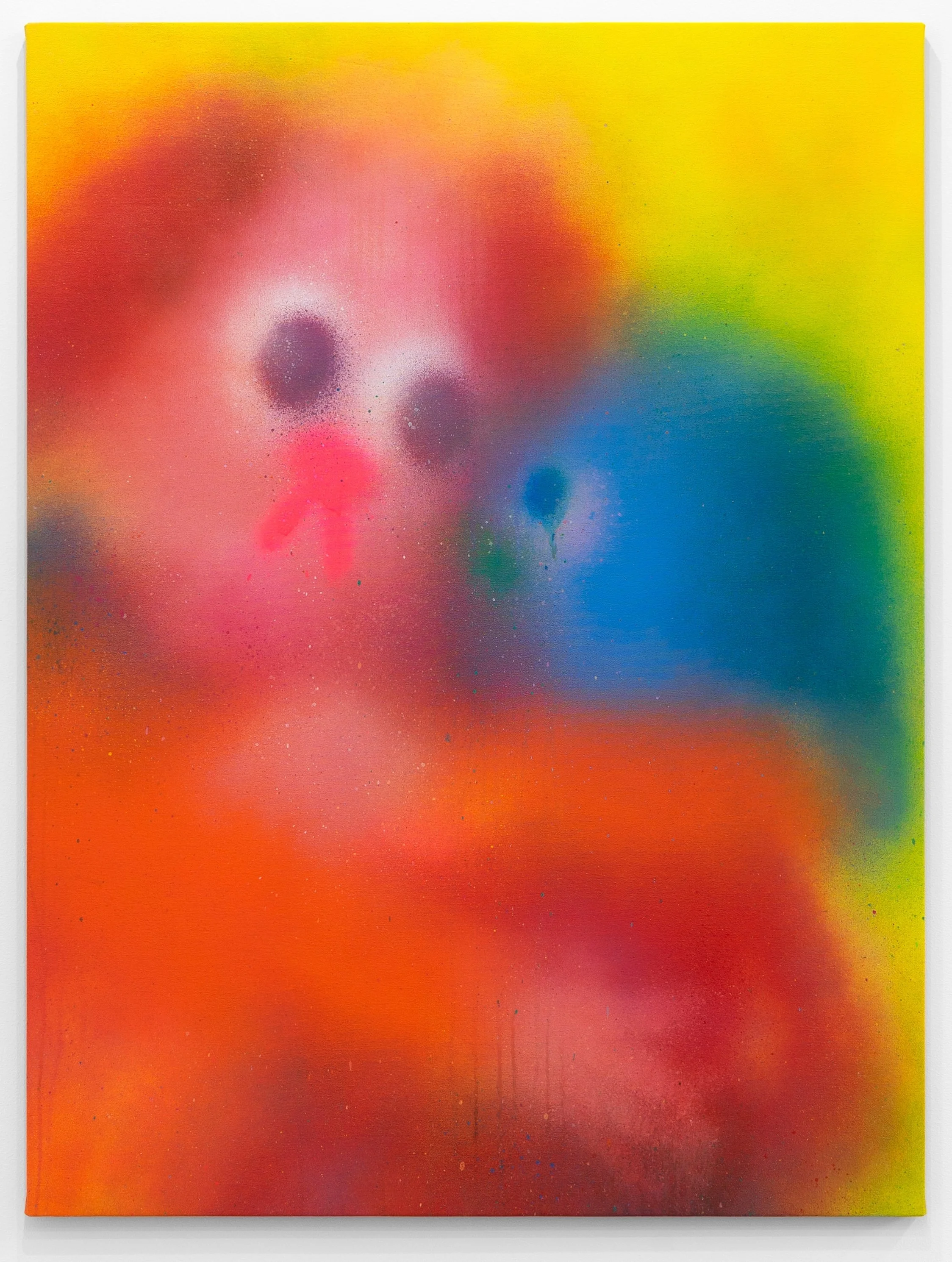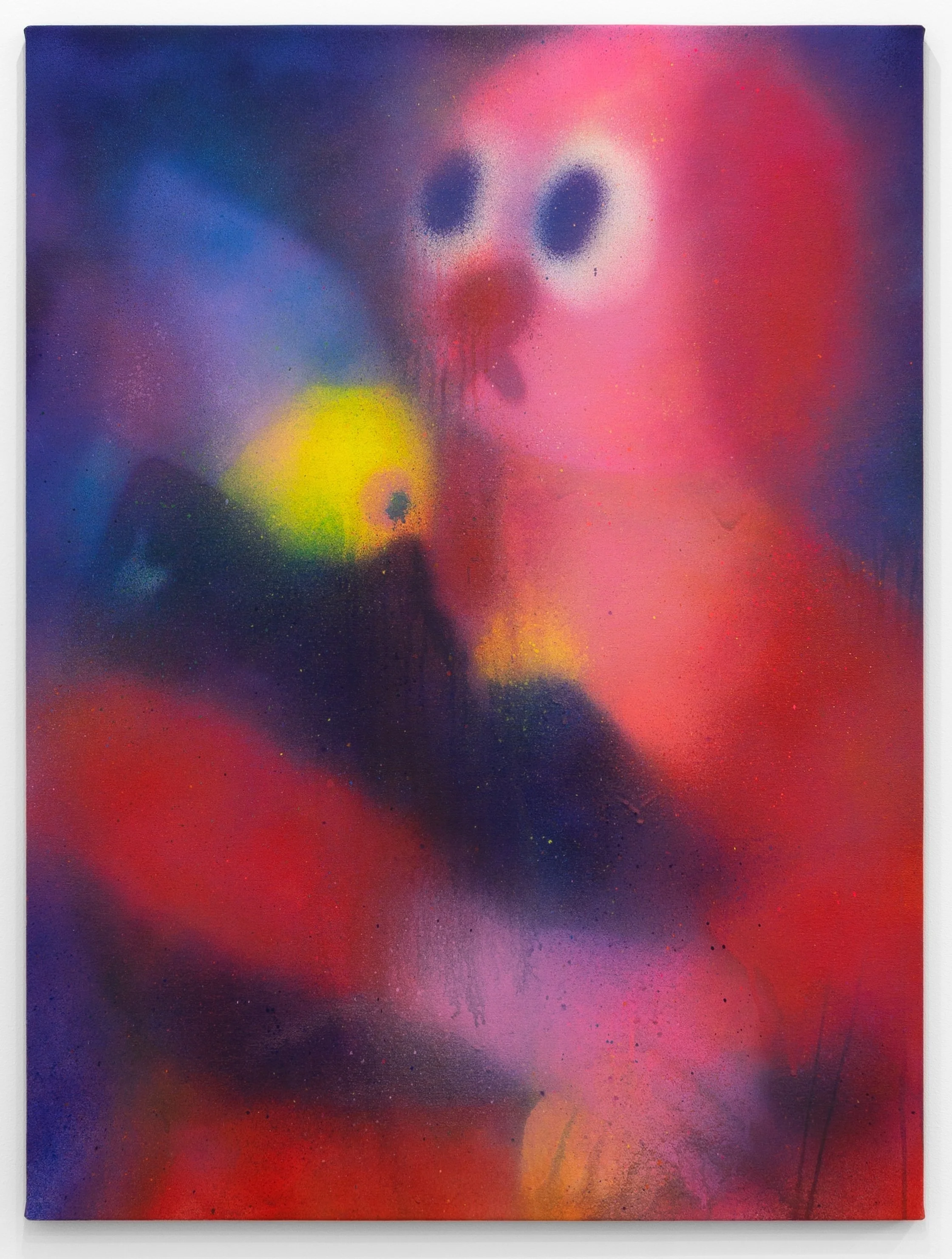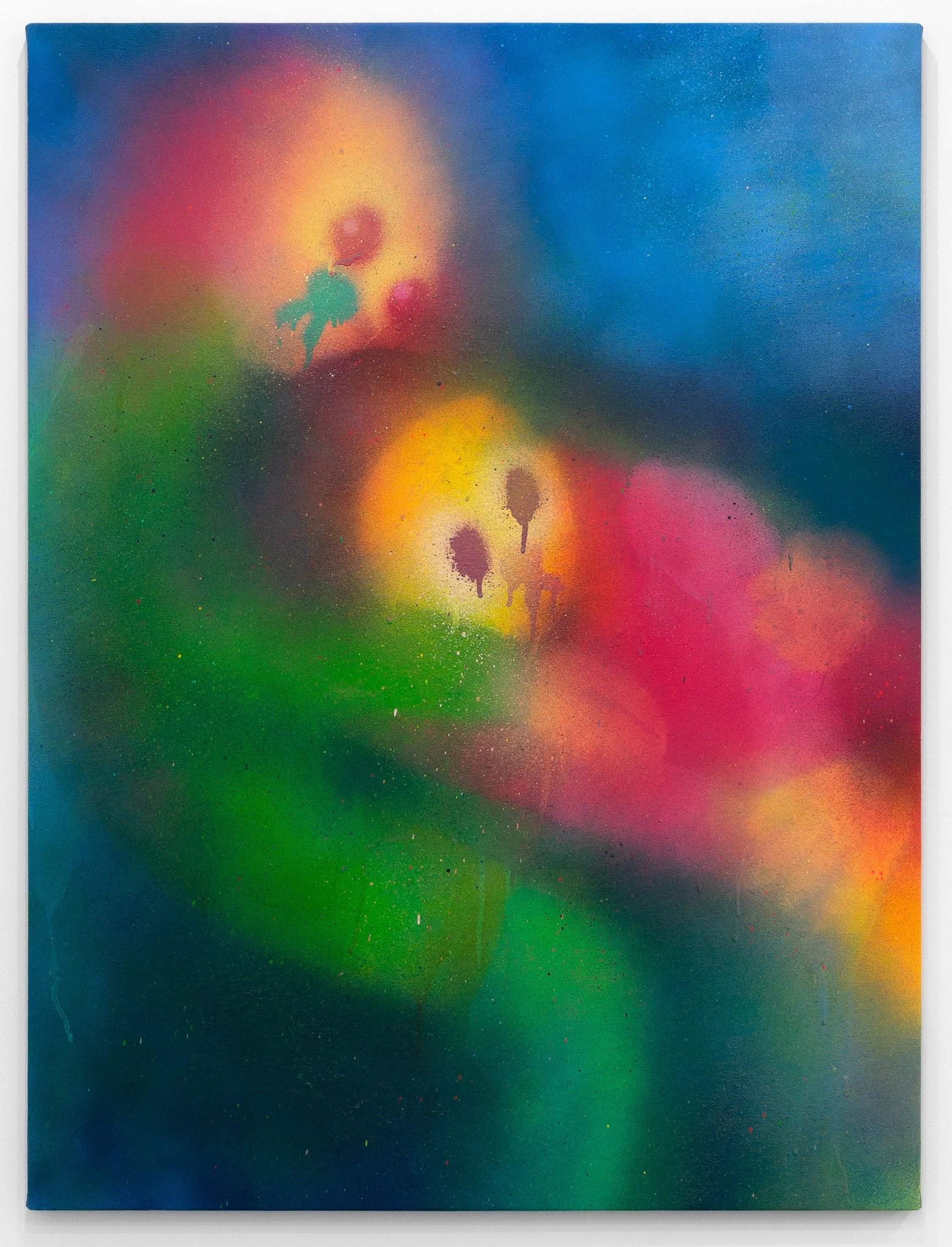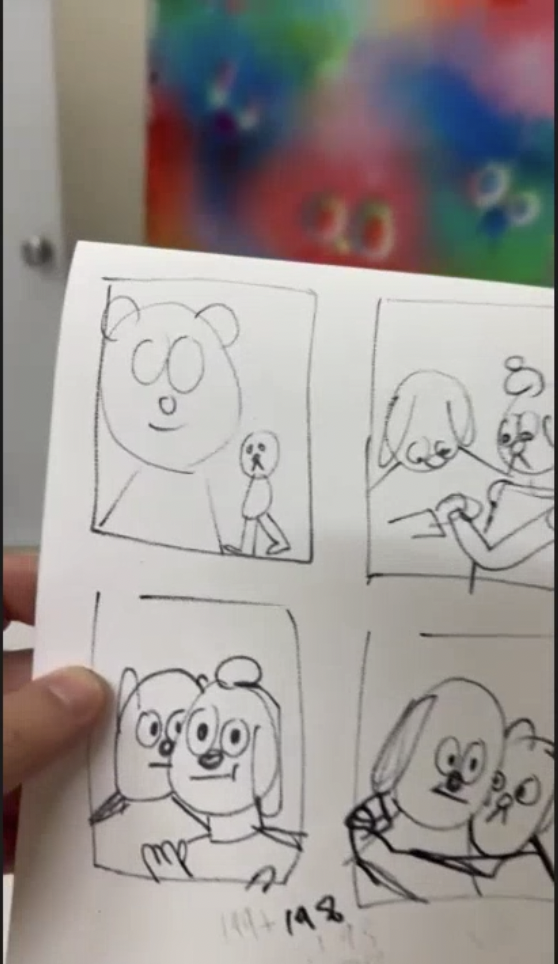Jon Burgerman
Hunted Projects is delighted to present this interview conducted on 08 October 2024 between New York-based artist Jon Burgerman and interviewer Meg Fennelly. The conversation took place in anticipation of Jon Burgerman’s highly anticipated solo exhibition, Cradle at Hunted Projects, Edinburgh. The interview dives deep into Burgerman's creative process, exploring the themes and inspirations behind his vibrant, character-driven artworks that blend humour with existential reflection. This exhibition marks Burgerman’s first solo show with Hunted Projects and offers a unique glimpse into his evolving artistic practice. Hunted Projects is excited to share this engaging dialogue, which captures the spirit and depth of Burgerman’s work as seen in Cradle.
Hunted Projects: Can you tell me about your current studio and working routine? Do you have any rituals or habits that contribute towards a productive day in the studio?
Jon Burgerman: I'm based in Gowanus, South Brooklyn. I recently moved to this part of Brooklyn late last year. I used to be based in Williamsburg, and once had a studio in Greenpoint. I've been in the studio for about five months or so. It still feels relatively new.
I often get here in the afternoon. After COVID, the way I work has changed, I got into the habit of working from home in the mornings, when I do all my computer based work. I'll have lunch at home and then arrive at the studio to work for the rest of the day.
When I'm in the studio, I don't need to do any computer work and if people email me I tend to leave it until the evening. This way I can just be focused on the thing that I like to do the most, which is painting or drawing, or something creative.
HP: I noticed in Berlin that you began working with oil. Is this new work with acrylic and collage an extension of your experimentation with different materials?
JB: Yeah, it's part of it. A little while ago I made a bunch of paper cut collages and then made small paintings based on some of them. I have my ‘home style’ of art work (large, soft spray paintings), but after an intense period in working in that one specific way I will inevitably need a break. Then I'll consider, what's the opposite of what I’ve just been doing? So I'll do that for a little while. Eventually I'll miss what I was doing before, and I'll feel refreshed enough to go back to it.
HP: To that point, it seems like a lot of your doodles, as well as your new collage projects, are based in a very intuitive practice. Is your approach to painting more structured or planned?
JB: Some of them here (Fig.1), they’re not very planned. I have an idea in my head and then I'll just make them like this one as well (Fig.2). They're created in the moment. Some of them are sketched out. Some of the little sketches have a lot of feeling to them. (Fig.3)
HP: So those actually look a lot more similar to the paintings in your exhibition Cradle that’s on at Hunted Projects right now.
JB: Yes, that’s right. A lot of these paintings began as drawings or little rough sketches.
When I came back from Berlin I was quite exhausted and I didn't come into the studio for a week or so, but I was at home working with some crayon on paper. I made all of these drawings. They're similar in vibe to what's on show at the moment at Hunted Projects. When I came back to the studio I was fascinated by the scribbly scratchy way of using the crayon. I wondered if I could take something from that into the spray paint.
HP: It’s definitely interesting seeing that translate across mediums and maintain the same blurriness. Especially in the new show you have a kind of a tone shift from your typical high velocity levity to, not a more serious set of works, but to a set of works dealing with anxiety. I think I’m curious how maybe you’re using the blurriness to address that or if it was a consideration?
JB: Yeah, for sure. I've never thought I must make works to make people happy or anything like that. I just thought I'd just make the works I want to make.
The blurriness…I started making the blurry kind of works just before the pandemic actually. My wife took a job in LA and so she was living there and I was on my own a lot and I think I was starting to get a bit depressed. I started using spray paint and I just thought it captured how I was feeling a little bit isolated and alone.
The medium lent itself to a new gamut of emotions that I couldn't articulate before with clean graphic shapes and very cartoony images. The lack of definition of the images allowed it to have a kind of melancholy memory.
HP: I know you’ve done a lot of commercial projects as well. Do you find that shifting to your commercial practice and then back to your artistic practice provides a similar sort of inspiration or conversation?
JB: I think that’s a good point. It gives me a chance to cut loose a little bit or take the pressure off. Commercial stuff has a totally different remit and often the client is directing things, you can have a bit of a break from your critical self.
HP: I was wondering too for that project; I know you’ve created sculptures for exhibitions before as well. Is this departure into larger scale sculptures a new thing, and is it something that you think you’ll continue with?
JB: I’ve always wanted to do that sort of thing, but I didn’t want to pay for it, so that’s another boon of working with a commercial client. I would love to create more large sculptures, and for some reason in China they're open to that kind of thing, which is great. I get to make massive sculptures AND get paid for it!
HP: Your work is really interesting in how it’s able to engage with a broad range of audiences in different ways. From younger groups with the picture books to adults dealing with their own anxieties, and making navigating that a kind of accessible, playful experience.
JB: Ha, yes, what I wide audience!
HP: Do you consider your audiences differently when you’re creating your artistic works versus your commercial works?
JB: Not really, although I always consider the form and context of where the work will go, but ultimately I’m trying to serve my own interests and curiosity. Part of that interest is engaging an audience, so it’s not completely self-serving.
Working with a gallery is still a commercial proposition and It's not that different to working with a commercial client. Galleries have to make money so they care about what you're going to make and who's going to buy it. Sometimes it's just as good/bad as working with a client and maybe working with a client is more honest and clear.
HP: Are there any upcoming projects you’re excited about that you can talk about?
JB: Friends of mine run a really nice ice cream company called Van Leeuwen. I just made a pint packaging for them. That will be in all the stores across America very soon, which I'm excited about. I think it’s great when my art gets to invade non-art spaces. It may look like nice packaging but actually it’s a painting I made in my studio and now it’s in your freezer. Not many artists show work in people’s freezers. How cool!! :)








